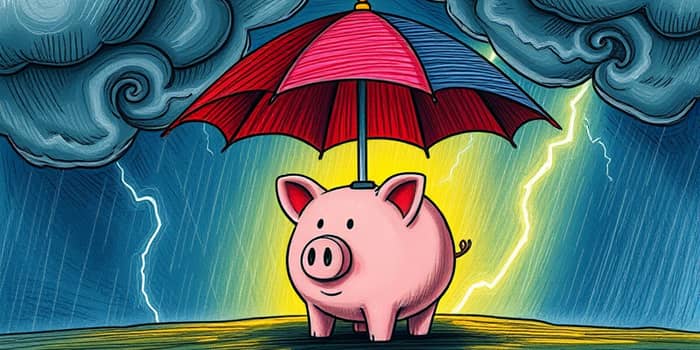Building wealth is a journey fraught with uncertainty. Yet before diving into stocks, bonds, or real estate, a foundational step often overlooked is creating an emergency fund. This initial financial cushion can mean the difference between weathering life’s storms with confidence and sinking into debt when crises strike.
In this comprehensive guide, we explore why an emergency fund is the essential first stop on any investment roadmap—and how you can establish and maintain yours for lasting stability.
Definition and Purpose of an Emergency Fund
An emergency fund is more than just extra savings. It is a pool of cash set aside specifically to address genuine crises—job loss, medical emergencies, or urgent home repairs. Unlike discretionary savings, it is unforeseen expenses or financial emergencies only, not vacations or luxury purchases.
The purpose is clear: provide a margin of safety so that your long-term investments remain uninterrupted when unexpected costs arise.
Why It’s the First Crucial Investment Step
Placing an emergency fund at the top of your financial priority list delivers multiple benefits:
- Avoid high-interest debt accumulation by covering costs without turning to credit cards.
- Maintain investment momentum: don’t sell holdings at a loss to cover expenses.
- Enjoy greater mental resilience: reduce the psychological burden during financial setbacks.
Without this safety net, even a modest crisis can derail your wealth-building plan.
Recommended Emergency Fund Size
Financial experts consistently recommend saving three to six months of expenses. To calculate your target:
- Tally essentials: housing, utilities, groceries, insurance, and transportation.
- Multiply by three to six for a robust reserve.
For many, an initial milestone of $500 to $1,000 provides quick relief, then expand toward the full target.
Current State of Emergency Savings
Despite clear guidance, many remain unprepared. Recent surveys show only 55% of adults can cover three months of expenses, while 30% have virtually no reserve. Younger adults lag: just 36% of those aged 18–29 meet the three-month mark.
Inflation and income volatility exacerbate the challenge, with 73% of Americans saving less due to higher costs. In a crisis, over one in three workers must rely on credit cards or loans, risking long-term financial harm.
Benefits of Having an Emergency Fund
Establishing this fund yields powerful advantages:
- Financial resilience grants flexibility for career moves or passion projects.
- Reduced stress improves overall well-being and decision-making.
- Maintained compounding returns as you won’t liquidate investments prematurely.
- Proactive rather than reactive financial decisions become the norm.
How to Build and Maintain Your Emergency Fund
Even a modest start propels you forward. Follow these steps:
- Open a dedicated account—ideally a high-yield savings or money market option.
- Automate contributions to your savings so money flows out of checking each pay period.
- Redirect windfalls—tax refunds, bonuses, or side gig income—into the fund.
- Track and trim discretionary spending to accelerate savings.
- After any withdrawal, prioritize replenishing the balance promptly.
Consequences of Lacking an Emergency Fund
Without this cushion, individuals often resort to high-interest credit cards or payday loans, triggering a debt spiral that can take years to escape. Dipping into retirement accounts not only incurs penalties but also forfeits future investment growth.
Moreover, financial insecurity can breed poor decisions—from settling for less favorable job offers to delaying critical healthcare.
Opportunity Cost: Cash vs. Investments
Some argue that holding cash means missing stock market gains. Yet the real cost of not having liquid reserves often exceeds potential investment returns when you’re forced to liquidate in a downturn. An emergency fund preserves your long-term strategy and allows you to benefit fully from compounding returns over time.
Expert Perspectives and Closing Thoughts
Financial planners and economists universally advocate for an emergency fund first. As Greg McBride of Bankrate notes, most Americans feel comfortable only once they’ve secured six months’ worth of living costs. Charlie Munger emphasized a financial safety margin as a core tenet of prudent planning.
By prioritizing this foundational step, you not only guard against unforeseen setbacks but also empower yourself to pursue growth opportunities without fear.
Calls to Action: Your First Steps Today
Don’t postpone your financial security. Begin with these simple actions:
- Calculate your essential monthly expenses accurately.
- Set an achievable initial savings goal, then expand to three–six months.
- Separate emergency fund from other accounts to maintain clarity and discipline.
- Automate recurring transfers and review progress quarterly.
Commit to this critical first step and lay the groundwork for a resilient, growth-oriented financial future.
References
- https://www.pwa.org/blog-01/building-financial-resilience-vital-role-emergency-fund
- https://www.stlouisfed.org/publications/page-one-economics/2025/sep/when-unexpected-happens-be-ready-with-emergency-fund
- https://www.merchantsbank.com/blog-articles/understanding-the-importance-of-an-emergency-fund
- https://corporatefinanceinstitute.com/resources/wealth-management/emergency-fund/
- https://rcbbank.bank/learn-financially-fit-emergency-funds-why-every-family-needs-one/
- https://www.bankrate.com/banking/savings/emergency-savings-report/
- https://www.amerantbank.com/ofinterest/understanding-the-importance-of-an-emergency-fund/
- https://www.troweprice.com/institutional/us/en/insights/articles/2025/q1/emergency-savings-na.html










